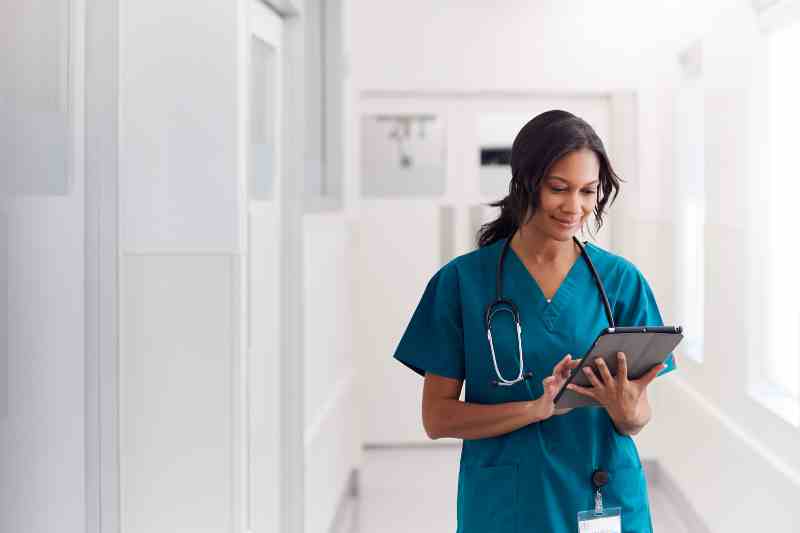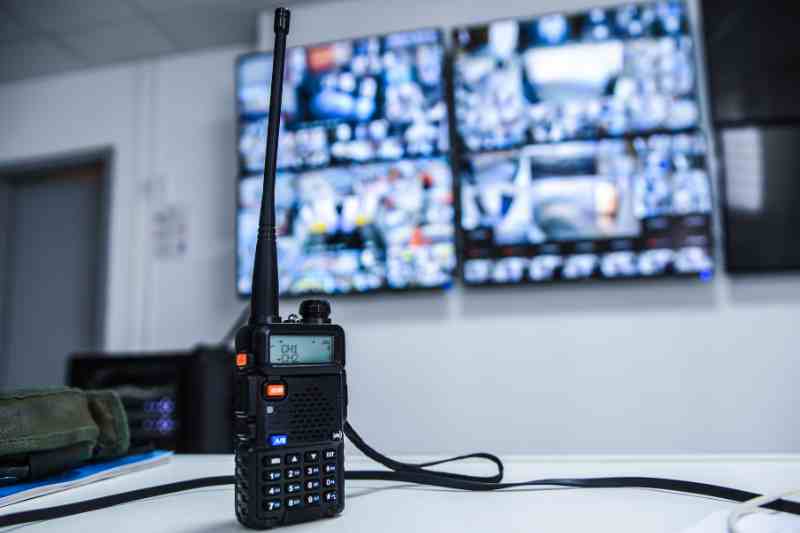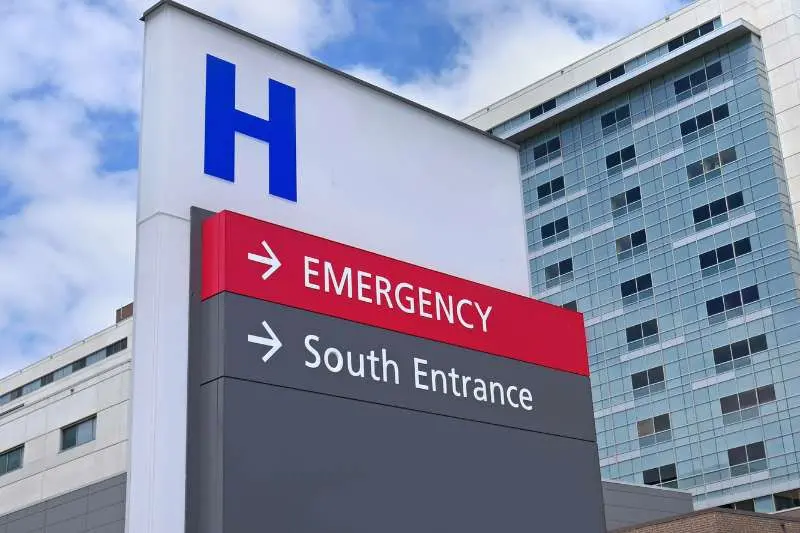Key takeaways
- Hospitals often implement more robust security measures than other types of institutions.
- Improving healthcare security is crucial for protecting patients, staff, guests, and hospital assets.
- Access control, visitor management systems, and security cameras all serve to boost security in healthcare facilities.

Beyond the conventional concerns of protecting sensitive patient information, enhancing security in hospitals extends to protecting the well-being of patients, staff, and the overall integrity of medical operations. As a result, safeguards like healthcare and hospital access control have emerged to help preserve the sanctity of personal health information and ensure safe medical care for everyone who depends on these institutions for their well-being.
Read on to discover ten ways to improve security in medical institutions. Then, find answers to commonly asked questions about healthcare security.
In this post, we cover:
10 ways to improve security in hospitals
Elevating safety and security in medical institutions requires a multilayered approach to ensure the well-being of patients, visitors, and staff and the security of sensitive assets like pharmacies and data.
Here are ten ways to improve security in healthcare facilities:
- Access control
- Security cameras
- Keep organized records
- Wearable panic buttons
- Security personnel
- Workplace security policy
- Secure personal information
- Risk assessments
- Lockdown protocols
- Infections and fall checks
1. Access control
Maintaining secure and convenient access to hospitals is one of the most important aspects of improving healthcare security. As a result, these standards serve to preserve patient and staff safety in hospitals.
Here’s how access control can enhance security in healthcare facilities:
- Keep track of visitors. Visitor management systems are one of the best ways to mitigate potential security risks. For example, visitor management systems allow staff to look into previous entry records in the event of a security incident or breach. Moreover, access control systems that provide easily accessible date-and-time-stamped audit logs enhance security and transparency in medical institutions.
- ID checks. ID and keycard checks help ensure that unauthorized visitors don’t breach hospital grounds. What’s more, modern hospital security systems use access control technology like video intercoms so that staff can visually verify guests before granting them access to the building.
- Reach out to law enforcement. Advanced access control systems can be programmed to automatically contact law enforcement and emergency personnel in an emergency.
- Cloud-based management. Cloud-based access control systems have remote access capabilities that enable real-time monitoring. As a result, security personnel can respond promptly to suspicious activities or incidents.
2. Security cameras
Security cameras empower staff and security personnel to monitor activity at hospitals. So, it’s one of healthcare institutions’ most vital hospital security requirements.
Here are a few ways security cameras boost security in medical institutions:
- Video surveillance. Security cameras continuously monitor hospitals to help deter unauthorized access, theft, and vandalism.
- Crime prevention. Security cameras act as a deterrent and reduce the likelihood of incidents like break-ins.
- Staff and patient safety. Cameras monitor high-traffic areas, emergency rooms, and secluded areas to ensure the safety of both staff and patients.
- Evidence trail. In the event of security breaches, accidents, or disputes, security camera footage serves as evidence for investigations.
- Compliance. Regulations call for the use of security cameras in healthcare facilities — hospitals, dentist offices, memory care, etc. — to ensure compliance with security standards and patient privacy.
- Emergency preparedness. Security cameras play a crucial role in emergency preparedness by providing situational awareness to responders during crises such as fires, natural disasters, or security threats.
Watch how ButterflyMX works:
3. Keep organized records
Effective record-keeping safeguards sensitive documents and enhances hospital security.
Maintaining detailed patient records allows healthcare providers to accurately identify individuals, track their medical history, and administer appropriate care to patients. Moreover, tracking hospital assets, like medical equipment and pharmaceuticals, deter theft and misuse and streamline inventory management.
Furthermore, precise record-keeping practices that adhere to regulatory compliance laws provide audit trails that enable swift responses to security concerns.
4. Wearable panic buttons
Wearable panic buttons usually integrate into employee badges or wristbands. What’s more, they empower staff to swiftly alert security personnel or colleagues in case of emergencies. So, by simply pressing the panic button, healthcare workers can trigger real-time alerts and pinpoint their exact location within the hospital.
As a result, this allows for a rapid response that not only expedites assistance, but also enhances the safety of both staff and patients.
5. Security personnel
Security personnel play an active role in boosting security at hospitals and other health facilities, such as nursing homes. Their presence and surveillance empower them to respond proactively to potential security risks.
Furthermore, these trained professionals serve as the first line of defense against potential threats, helping ensure the safety of patients, staff, and visitors at hospitals.
Further, having visible security personnel deters unauthorized guests and disruptive behaviors, maintaining order and a sense of safety throughout the facility.

6. Workplace security policy
Implementing effective hospital security procedures helps mitigate security risks while ensuring the safety of staff, patients, and visitors.
Here’s how to implement a dynamic workplace security policy:
- Conduct a worksite analysis. Conduct a worksite analysis to identify potential risks and security gaps.
- Evaluate potential hazards and establish prevention protocols. A proactive plan empowers you to be prepared for emergencies of all types.
- Safety and health training. Keep staff and security personnel up-to-date in safety and health training to ensure that patients and their families are informed and protected.
7. Secure personal information
Personal information security helps ensure the integrity of patient data and uplifts confidentiality. By prioritizing the security of personal information, hospitals minimize the risk of data breaches and unauthorized access to sensitive material.
As a result, this proactive approach upholds patient trust and strengthens overall hospital security.
8. Risk assessments
Conducting regular risk assessments is a key part of following hospital security requirements. These assessments enable healthcare institutions to proactively anticipate security risks and develop targeted strategies to address them.
Consequently, thorough evaluations of hospital infrastructure, operations, and existing systems give administrators valuable insights into potential areas of weakness.
Further, quiet risks such as patients wandering out of memory care facilities or missing meals need to be addressed in spaces like these.
9. Lockdown protocols
Implementing hospital safety rules in your lockdown procedure is one of the best ways to ensure a safe and efficient plan in the event of emergencies.
Rigorously assessing the effectiveness of existing lockdown procedures empowers healthcare professionals to identify areas for improvement and refine protocols.
Further, this evaluation process should involve analyzing communication systems, access controls, and staff training to ensure a seamless response during lockdown situations.

10. Infections and fall checks
Conduct systematic assessments of infection control practices to ensure compliance with current hygiene protocols and mitigate the spread of pathogens. This protects patients and staff from infections at hospitals.
Similarly, routine fall checks allow healthcare providers to evaluate environmental factors and patient conditions that may contribute to potential falls. So, these preventive measures help minimize the risk of injuries.
Security in hospitals FAQs
Here are some commonly asked questions about ensuring hospital security:
- What does security do in a hospital?
- Why do hospitals have so much security?
- What are the security measures to be taken in a hospital?
- Do hospitals have their own security?
What does security do in a hospital?
Proactive security measures protect staff, patients, and hospital assets from potential security breaches.
Why do hospitals have so much security?
Hospitals implement robust security measures to ensure the uninterrupted and safe provision of vital medical care. Healthcare regulatory compliance laws often require these security measures.
What are the security measures to be taken in a hospital?
Security measures that are taken in hospitals usually involve investing in robust access control, using visitor management systems, and utilizing security cameras to monitor the premises.
Do hospitals have their own security?
Yes, most hospitals use a combination of security cameras, security personnel, and access control systems to improve their security.







